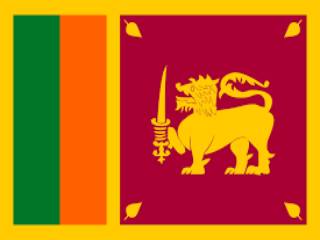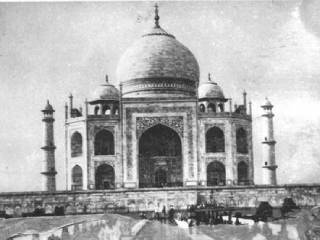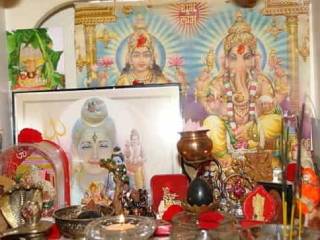
One day in the autumn of 1989, at National High School, in Srinagar, I confided in my classmates that my father owned a copy of The Satanic Verses. It had been brought for us secretly by a Melbourne-based uncle, who knew my father’s admiration for Salman Rushdie and his novels. That afternoon, as I returned home, some boys stopped me and introduced me to a lanky youth who claimed to be the Area Commander of a militant organisation. The boys accused me of blasphemy and said that I had insulted the Prophet by talking about The Satanic Verses. They ordered me to apologise and recite some verses from the Quran. I resisted initially, but feared for my parents when the youth lifted the hem of his pheran and showed me the nozzle of a pistol. I did what they asked: Apologised, repeated the words they recited, and upon being threatened, swore never to lie again (they refused to believe that I had the banned book at home). After slapping me, they let me go.
Years later, in 2005, when I read Rushdie’s magical-realist novel, Shalimar the Clown – partly set in Pachigam, a fictional place in Kashmir – I was surprised to find a description of the fate of the Pandits, of families like my own.
Hindu community houses, temples, private homes and whole neighbourhoods were being destroyed… Kill one, scare ten, the Muslim mobs chanted, and ten were, indeed, scared…Three hundred and fifty thousand Pandits, almost the entire Pandit population of Kashmir fled from their own homes and headed south to the refugee camps where they would rot, like bitter fallen apple, like the unloved, undead dead they had become. In the so-called Bangladeshi Markets in Iqbal Park – Hazuri Bagh area of Srinagar the things looted from temples and homes were being openly bought and sold… Three and a half lakhs of human beings arrived in Jammu as displaced persons and for many months the government did not provide shelters or relief or even register their names, why was that… The camps at Purkhoo, Muthi, Mishriwallah, Nagrota were built on the banks and beds of nullahas, dry seasonal waterways, and when the water came the camps were flooded, why was that…The pandits of Kashmir were left to rot in their slum camps, to rot while the army and the insurgency fought over the bloodied and broken valley, to dream of return, to die while dreaming of return, to die after the dream of return died so that they could not even die dreaming of it, why was that why was that why was that why was that why was that.
On September 14, 1989, as I was going for tuition to Fateh Kadal in downtown Srinagar, I heard about the assassination of Tika Lal Taploo, a prominent lawyer and chief of the Bharatiya Janata Party (BJP) in Jammu and Kashmir. He was shot dead outside his house in Habba Kadal, Srinagar. Six weeks later, on November 4, militants killed Justice Neel Kanth Ganjoo in Hari Singh High Street. His granddaughter was my friend and classmate. As the Sessions Judge, Justice Ganjoo had sentenced Maqbool Bhat, co-founder of the Jammu & Kashmir Liberation Front, to death for murdering a police inspector in Baramulla, and also for murdering a bank officer. Thousands of people came out on the streets and celebrated the killing of Justice Ganjoo. ‘Maqbool Bhat’s death has been avenged,’ our neighbour said. People in our neighbourhood chanted pro-Pakistan slogans, waved Pakistani flags, and burnt effigies of Indian leaders.
At the onset of the New Year in 1990, I witnessed a strange turn of events in Khankah-i-Sokhta, my locality. Known for the abiding friendships between Muslims and Pandits who lived there, the locality resounded with cries of Muslim men and women whose teenaged boys started disappearing from their homes to join militant outfits and wage war against the security forces deployed in Srinagar. Many of these boys never returned. A sense of fear grew among the Pandits as they saw Muslim youths glorify the armed struggle against India. When security forces killed militants, it was marked by grief as well as jubilation.
Anti-Pandit sentiment prevailed everywhere. It brought back the horrific memory of the riots in Kashmir’s Anantnag district in February and March 1986, in which many Pandits were targeted and attacked, and temples were desecrated and ransacked. While hundreds of Muslims came out on the streets in downtown Srinagar, defying curfew and shoot-on-sight orders, to demand freedom from India, the Pandits huddled indoors in fear and bewilderment.
In February 1990, militants killed Lassa Kaul, Director of Doordarshan Kendra, outside his house in Bemina. He was my father’s friend. At his funeral, which was attended by hundreds of Pandits and a Central Minister of Information and Broadcasting who’d flown in from New Delhi, Muslim protesters chanted slogans against Jagmohan, the Governor of the state, who had just assumed office. At Lassa Kaul’s funeral, Pandits wept. Muslims blamed Jagmohan for Lassa Kaul’s death. They spread rumours that his killing was a conspiracy hatched by the Indian intelligence agencies to discredit the muhajids and the Tehreek. Before his death, Lassa Kaul had confided in my father about the threats he had received from militant groups. Some militants had visited him in his office and ordered him to stop broadcasting Indian TV programmes in Kashmir. Ignoring the demands and threats, he had continued to work although many of his colleagues had advised him to leave Kashmir. He had been taking care of his ailing father.
The kidnapping of Soom Nath Saproo, our neighbour, terrified us. He worked in the Defence Estates Office of the Government of India and was posted at Shivpora. His daughter was my classmate and used to take tuition from my father at our place. Saproo had gone to buy milk when he was kidnapped. My father and I went to his house. Many Pandits and Muslims had gathered there. Our neighbour, Hafiz, told us that Saproo was on the hit list of a militant outfit because he worked for the Central Government. He had even warned Saproo. Saproo’s family revealed that they had received threats from a militant group that he would be targeted. Two days later, at the behest of influential people in the locality, the militants released Saproo. He reached home with a gash on his head. He wouldn’t talk. He fled to Jammu the next day. He died a few years ago. His last wish – to return home – remained unfulfilled.
In April 1990, Hizb-ul-Mujahideen, through the columns of an Urdu daily, Al Safa, issued an ultimatum to Pandits to leave Kashmir in 36 hours. On the same day, the newspaper also carried an ominous column referring to Pandits as untrustworthy and informants of the Indian intelligence agencies. This was the second time a pro-Pakistan militant outfit had issued an ultimatum to Pandits. The first had appeared in Aftab, in January. At that time, Pandits had persisted and lingered.
In our locality, I saw hundreds of posters pasted on doors, walls, shops and electric poles ordering Pandit families to leave. Suspicion, betrayal and mistrust divided the Muslims and the Pandits. Friends parted from friends, neighbours from neighbours. The Pandit families started to pack and leave. A few families, including mine, didn’t leave. We spent nervy days inside our house with a foreboding that these were our last days.
Some days later, I saw Ismael and his two sons dumping arms in a dugout in the courtyard of their house, which was next to ours. Ismael was my grandfather’s friend. He reared pigeons for a living.
One day, our neighbour, Professor Nilla Kanth Raina, a retired professor of history, was loading his luggage in a truck and about to leave with his wife for Jammu, when he was shot dead by his own students who had joined a militant group. Professor Raina was in his sixties that time. We took his killing as a clear signal for the rest of us to leave. It was the beginning of an end. My mother became worried and didn’t allow my father to go to his college to teach, though he was calm. One night, we heard whispers outside our house. My parents and I were in the living room on the first floor. My grandparents were sleeping in their room. My father peeped through a chink and saw two young men pacing the narrow lane. One of them was holding a pistol in his hand. The two whispered into each other’s ears. One of them lit a cigarette. Then he knocked at the door. My mother wanted to scream. The knocking persisted. ‘What shall we do now?’, my mother asked my father. Let us be quiet, my father said. We sat still until midnight. The two men kept pacing the lane and knocking at the door. Then we heard one of the men whisper to the other, ‘Are you sure this is the house?’ ‘Yes, this is the Professor’s house,’ said the other man.
That night, my parents decided to leave.
On April 15, Sarla Bhat, working as a resident nurse at the Sher-i-Kashmir Institute of Medical Sciences in Soura, Srinagar was abducted from her hostel. After four days, her mutilated body was found in an area downtown. A handwritten note was attached to it, describing her as a police informant. Sarla Bhat was in her mid-twenties. After her body was handed over to her father, Shambu Nath Bhat, in Anantnag, he was not allowed to carry out the last rites during her cremation. It was a rushed affair as the militants had ordered the people in the locality to keep away from the family. Shambu Nath Bhat took his family to Jammu soon thereafter. Indu Bushan Zutshi, the Bhat family’s neighbour in Anantnag, recounts the horror faced by the family in his memoir, “She was Killed Because She was an Informant; No Harm will Come to You”, published in the book, A Long Dream of Home.
Some months later, before migrating to Udhampur, my grandmother went to the shrine of the great mystic, Reshi Peer, at Ali Kadal and to Roopa Bhawani temple, the birthplace of Roopa Bhawani, the 17th century saint-poetess of Kashmir, and offered a niyaz (prayer and an offering) that she may return home soon. She kept hope aflame in her heart for 22 years.
*
In August 2015, I travelled from Delhi to Jammu and went to meet some Pandits living in the migrant camp at Muthi. At the time, Varad Sharma and I were putting the finishing touches on the book we were co-editing, A Long Dream of Home. Many Pandits had sent us their memoirs and essays to be included in the anthology.
I’d been to the camp several times in the past. This time I met Sushant Dhar, a promising young writer who had spent his entire childhood living in several camps. He showed me his memoir, ‘Summers of Exile’. Sushant and I met Prithvi Nath Kabu, a retired teacher living alone in a two-room flat allotted to him in the camp at Muthi. He had lost his wife a few years earlier. His son, Ravinder, had been killed by militants in Gool, Arnas in Jammu & Kashmir in 1997 – one of three lecturers killed to instil fear among the Pandits who had stayed behind.
Going further back in time, Kabu narrated an account of when Pakistani tribal raiders entered Kashmir in October 1947 and raided their village in Baramulla. He talked for hours, until midnight, even forgetting to have his dinner. It was a tragic tale of persecution of the Pandits of Baramulla at the hands of the marauders. Kabu told us: ‘They seized Baramulla and torched the houses of Pandits. When they entered our village, they started killing people and robbing the houses. They forced the Pandits at gunpoint to recite the Kalima to convert them to Islam. Those who dared to resist were hacked to death inside their homes. Many Muslims joined the raiders to save themselves. Some raiders came to our house and searched us. They slapped my father and snatched his possessions. We fled to the neighbouring village and hid in the loft of someone’s house. We had not seen such devastation in our lives. The terror lasted for days.’
Much later, Kabu would spend his savings to construct a house for his family in Srinagar. Little did he imagine that they would have to leave their house one day. ‘My only wish is to return to Baramulla and kiss the gates of my old school,’ Kabu said to me as I bid him goodbye. ‘I am neither here nor there.’ Before letting me go, he showed me his son’s photograph. We parted on a sombre note, promising to meet again on my next visit to Jammu.
At the camp, I came across countless stories about the 19th of January 1990 – the day of our exodus. Each of the displaced families had a haunting story. At the heart of each is horror. I tried to capture some of these stories in just a paragraph or a page. I failed. Behind the stories of these families was a history – the history of an entire community whose very identity is now on the brink of extinction. What is to become of us? How will our future generations remember their ancestry? A handful of these elderly men and women who I met in the migrant camp possess something very precious. A fading memory, but one that comes alive when they talk about their homes in Kashmir, the circumstances in which they left, a decade spent in tents in camps, another decade in one-room tenements. And now, in the camp at Muthi. These people will fade away and so will a part of our history.
In the current Indian political scenario, Pandits are a forgotten entity. The middle-aged and youngsters visit Kashmir as tourists and pilgrims. About two thousand Pandit youths have been given non-transferable jobs in government departments in Kashmir. Devoid of freedom and a sense of belonging, they live in ghettos created by the authorities. Some live in rented accommodations. Is this the homecoming they dreamt of?
According to a state government report of 2010, 219 Kashmiri Pandits were killed in the region between 1989 and 2004. But according to a survey conducted by Kashmiri Pandit Sangharsh Samiti, 650 were killed between 1989 and 2008. In the last 25 years, thousands of men and women perished in exile hoping to return to their homeland. The elderly Pandits who still linger in camps and temporary settlements, leading impoverished lives, find themselves in a vortex. They want to return to their homes, but there are no homes to return to. Children born and brought up in camps live off a borrowed memory. Their childhood, spent in puny and squalid camps, was black.
The new generation in Kashmir doesn’t even know that Pandits lived there. They don’t know that Islamabad in South Kashmir was once called Anantnag, the land of countless springs. That Takht-e-Suleiman was once known as Shankaracharya temple. That Koh-e-Maraan was once called Hari Parbat, the Sharika Peeth, abode of Goddess Sharika. That around two hundred temples in Kashmir were destroyed.
There hasn’t been any progress on Pandits’ return to and rehabilitation in Kashmir. Separatists oppose the idea of establishing a settlement for Pandits in Kashmir. Others say that Pandits are welcome to return. But how? If Pandits are to return to Kashmir and rebuild their houses, the people of Kashmir must create the conditions. Can Kashmiris rise above their divides, and pledge to create a Kashmir where everyone can thrive and co-exist? Extremists still have influence over common people and over matters of governance and law and order. Those who really want to make a difference are in a minority.
January 19. A day of little historical significance for most people across the world, it is a Black Day for Kashmiri Pandits. A day of commemoration! We remember this day as the day of parting, the day of our exodus from Kashmir. Many of us write articles, organise and participate in events narrating our plight to the world and proclaiming that we still exist, despite the ouster from our homeland and two-and-a-half decades of life in exile. News channels give us some airtime. Politicians and intellectuals make passing references to us, often speaking of us in the past tense. ‘Kashmiri Pandits were…’ Many of us take to Twitter and Facebook to share photographs of our old homes in Kashmir and of our parents and grandparents when they were young. We recollect our last days in Kashmir. We look back upon the dark times spent in camps, waiting to return home. We narrate the story to our children, to friends and colleagues, and to those who have little clue about why we left and how we lived. Can we ever sum it up in a line or two?
Morning: Home in Kashmir
Evening: A camp in Jammu
In December 2015, I travelled again to Jammu to speak at a literature festival there. I met some of the people who contributed to A Long Dream of Home. While talking to one contributor about my visits as a child to my relatives in Khrew and Ladhoo, two idyllic villages in Kashmir, I asked if she had recounted everything that needed to be told. ‘Hardly,’ she said. ‘There is an important incident I remember now.’ Which incident, I asked out of curiosity. ‘It pertains to a Pandit family who lived in Ladhoo and whose teenaged son was killed by militants because he secured a first rank in the school examination. Nobody knows about it.’ Hope you will write your book soon, I said to her. She promised she would.
The next morning, I met Sushant Dhar. He broke the saddest news about the death of Fancy Pandita, a 42-year-old woman who lived in the camp. Fancy was Sagar Pandita’s mother. Sagar is the youngest contributor to the book, and his memoir, “Life in the Camp”, begins with the following lines: ‘I was born in a one-room tenement called the Gole Quarters at Muthi Camp in Jammu. I lived there with my parents for sixteen years.’
Sushant and I visited Prithvi Nath Kabu again, as promised. Kabu had received his copy of A Long Dream of Home, which includes his memoir, “Seasons of Longing”. I asked him if he had read the other memoirs in the book. Offering me a kangri, he began, ‘Now that you are here, I remember other incidents which I didn’t share with you when you visited last. In 1947, when Pandit Jawaharlal Nehru visited Kashmir, something ominous was brewing there. There were people who wanted to prevent Nehru from coming. Many Muslims in Baramulla said to us that a day would come when India would lose Kashmir. But we, Pandits, were full of hope. We thought the worst was over.’ Kabu narrated other happenings, which are of enormous historical significance to our community, and had shaped his life as a teacher and a person with an avid interest in Kashmir’s history.
‘I have been a witness to these events,’ he said to Sushant and me, indicating that he was still carrying the burden of that lived history. ‘This history impacted our lives permanently and should never be forgotten. I personally can never forget. See what has become of us.’
It must be recorded and written about, I said.
Kabu nodded. ‘How else will our descendants know about us and what happened to us in 1990 because of these events further in the past?’ His eyes conveyed a deep sense of longing. I left Kabu’s place with a realisation. That in order to understand our present, we must go back to the past. If many of my generation don’t have the memory of those times, at least we must not let the memory of our elders fade. This history must be told and re-told. Generations from now if we don’t have our homeland and our cultural identity withers, too, this remembrance of an event, a year, even a day will be the proof of our existence.
In the camp complex, I saw two old women walking towards a vendor selling vegetables on a cart. They were wearing the tarang, a traditional headgear worn by Pandit women in Kashmir. The embroidery was exquisite. Nearby, some boys were playing cricket. Men were sitting on a pavement and talking. I couldn’t take my gaze off the women in the traditional attire. ‘These two women, possibly, are the last remnants of our cultural heritage. They carry in their hearts the last story of the soon-to-be-lost tribe,’ I said to Sushant.
‘I see them almost every day,’ he replied. ‘I won’t let their story die.
Siddhartha Gigoo’s A Long Dream of Home: The Persecution, Exodus and Exile of Kashmiri Pandits is co-edited with Varad Sharma and published by Bloomsbury. His other books are The Garden of Solitude and A Fistful of Earth and Other Stories. His short story The Umbrella Man won the Commonwealth Short Story Prize for Asia in 2015.
Source : TheWire



 Mizoram: EC accepts Christians’ demand to defer counting on Sunday, but what if Hindus had made a similar demand?
Mizoram: EC accepts Christians’ demand to defer counting on Sunday, but what if Hindus had made a similar demand? Sign Petition : Immediately repeal the draconian and unconstitutional ‘The Waqf Act, 1995’
Sign Petition : Immediately repeal the draconian and unconstitutional ‘The Waqf Act, 1995’ Shriram : Sri Lanka’s saviour
Shriram : Sri Lanka’s saviour Why it is so cool to malign Hindu gods and goddesses, but it may not be that easy now
Why it is so cool to malign Hindu gods and goddesses, but it may not be that easy now Shocking Truth of Taj Mahal exposed by Late Pujya P. N. Oak
Shocking Truth of Taj Mahal exposed by Late Pujya P. N. Oak How are Hindus treated in states where they are in a minority?
How are Hindus treated in states where they are in a minority?